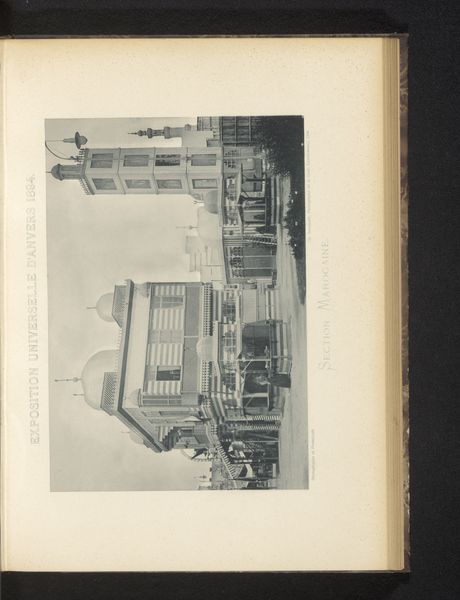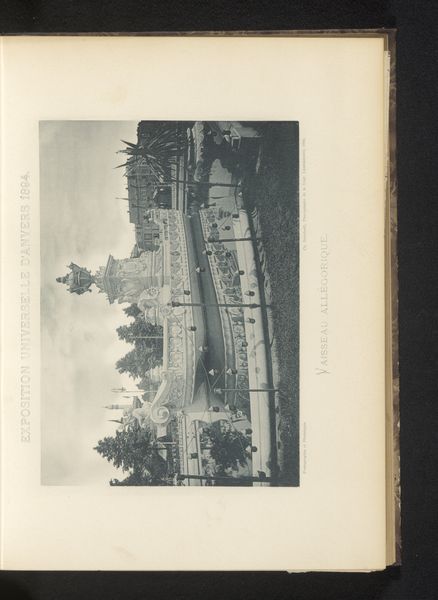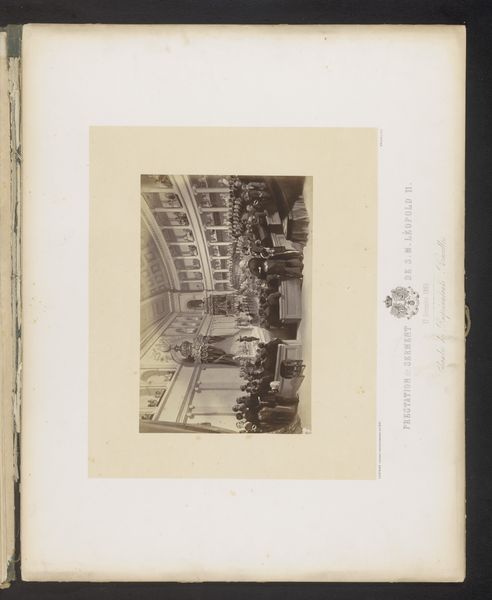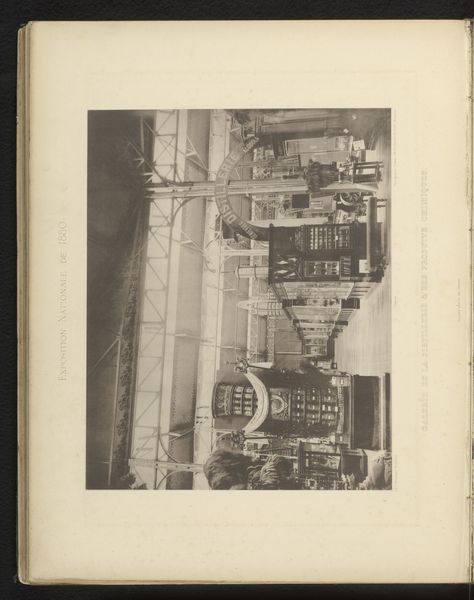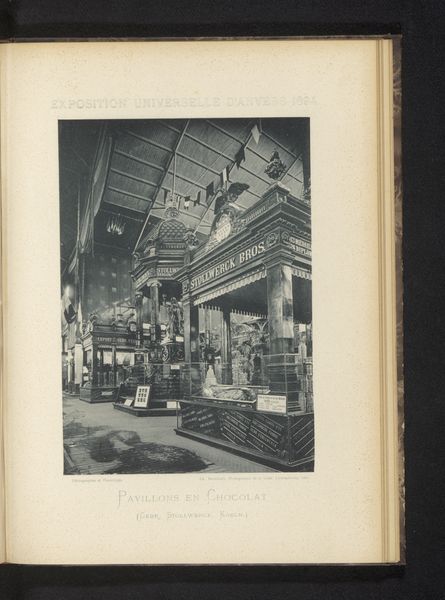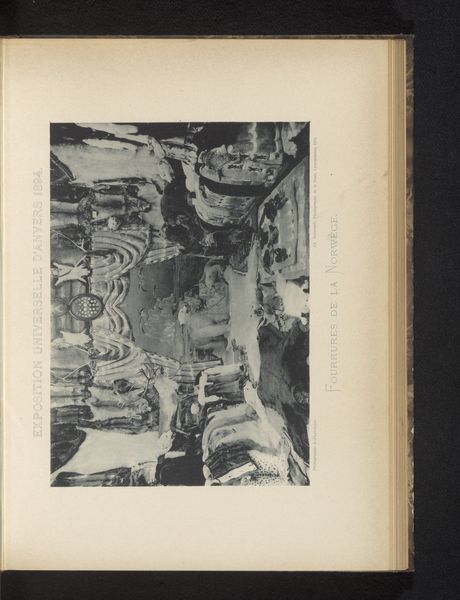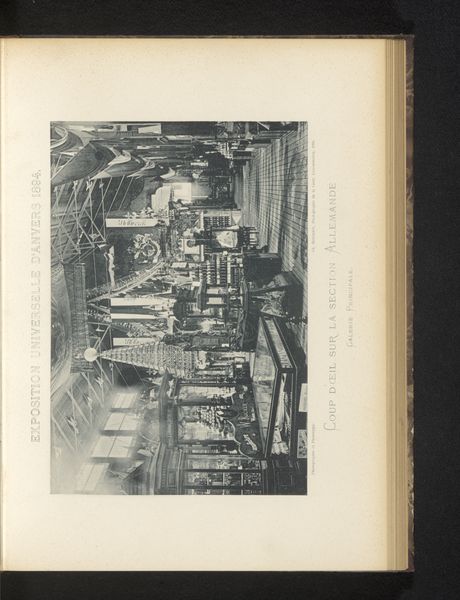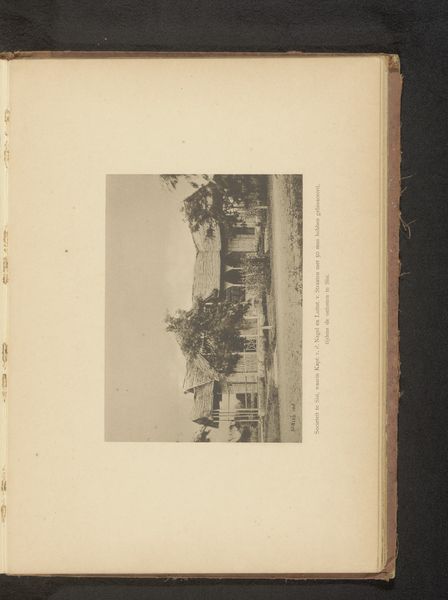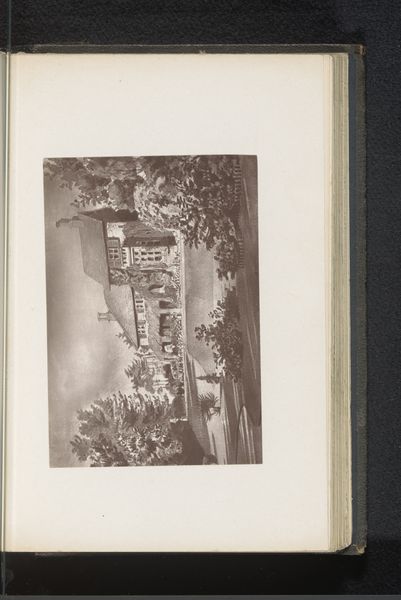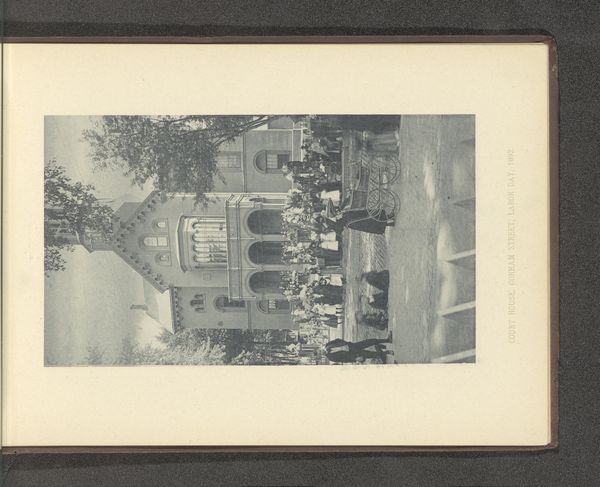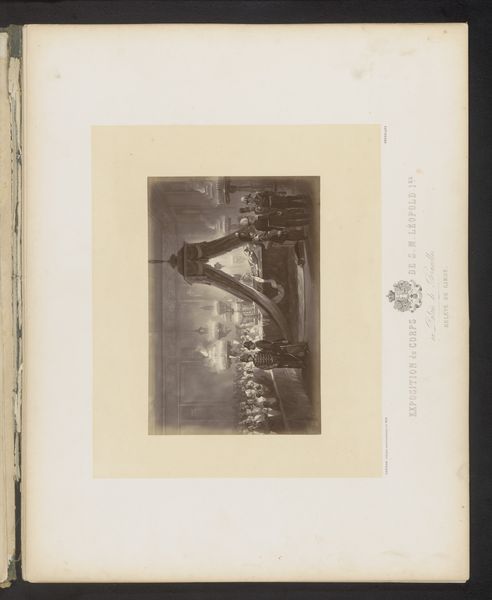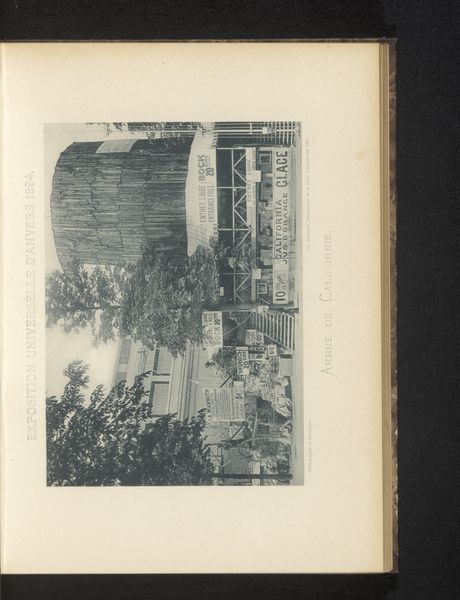
Gezicht op het paviljoen van de Norddeutscher Lloyd op de Wereldtentoonstelling van Antwerpen in 1894 1894
0:00
0:00
print, photography
#
art-nouveau
# print
#
photography
#
orientalism
#
cityscape
Dimensions: height 153 mm, width 217 mm
Copyright: Rijks Museum: Open Domain
Editor: This is a photographic print from 1894 by Charles Bernhoeft. It captures the Norddeutscher Lloyd pavilion at the Antwerp World's Fair. I'm struck by how grand and theatrical it appears, almost like a stage set. How should we interpret its place in history? Curator: Well, that theatricality is key. World's Fairs were deliberately designed spaces meant to project specific national and industrial narratives. Think about who Norddeutscher Lloyd was: a major shipping company projecting German power and technological advancement on a global stage. Editor: So, it's more than just an attractive building? Curator: Absolutely. It’s about carefully constructing an image of progress and influence. The art nouveau flourishes, what looks almost like orientalist detailing – it all signals a certain global awareness, or perhaps a co-opting of global aesthetics to enhance German prestige. Who was this imagery for, and what was it saying? Editor: I guess I hadn't thought about the underlying message it was sending, I just saw a pretty picture! Is it naive to think these spaces were purely about celebrating culture? Curator: That's exactly the tension we need to explore. Fairs like these helped define "culture" in very specific, often politically charged ways. It's important to consider the power dynamics embedded in these displays of technological and artistic achievements. They are hardly ever ‘pure’. Editor: This pavilion now seems much more complicated, considering what these exhibitions truly meant, like symbols of influence on the global landscape. Curator: Precisely, by unpacking these elements, we gain insights into the complex relationships between art, power, and global ambition during that era.
Comments
No comments
Be the first to comment and join the conversation on the ultimate creative platform.
